The Tonopah & Tidewater Railroad
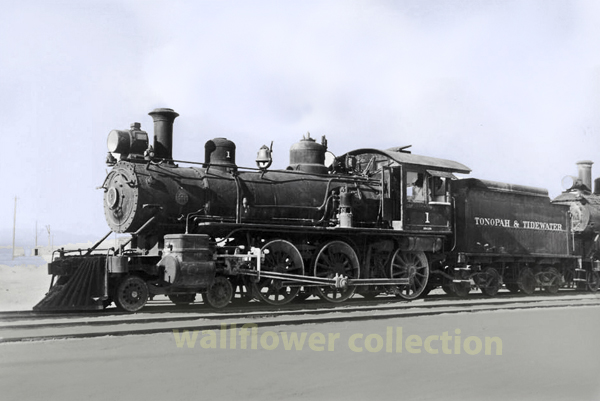
4 The Tonopah & Tidewater Railroad: Borax, Betrayal, and the Battle for the Desert
In the vast reaches of the Mojave Desert, where silence stretches over dry lakes and jagged ranges, the steel rails of a once-mighty railroad stitched together an empire of minerals and ambition. The Tonopah & Tidewater Railroad, built between 1905 and 1907, was more than a line of track connecting Ludlow, California to Beatty, Nevada—it was the physical embodiment of Francis Marion "Borax" Smith’s relentless drive to transport borate ore from some of the most inhospitable terrain in the American West.
The origins of the T&T trace back to borate-rich lacustrine deposits scattered around Death Valley. In the 1870s, John Searles developed the iconic 20-mule team to haul borax from Slate Range Playa, a system that William T. Coleman adapted to transport “cottonball” ulexite from the Harmony Borax Works he established in 1882. Coleman's enterprise thrived for a time, shipping borax from Death Valley to Mojave via mule-drawn wagons, until financial troubles led to the sale of his holdings in 1888.
Enter Francis Marion Smith, who had already tasted success at Teel's Marsh in Nevada. In 1890, he acquired Coleman’s operations—including the Harmony plant and the Lila C. Mine, named after Coleman’s daughter—and founded the Pacific Coast Borax Company. Smith later expanded further, establishing Borax Consolidated, Ltd. in 1899 with international backing out of London. Yet the heart of his empire, the Lila C. Mine in the Greenwater Mountains near Death Valley Junction, posed a stubborn problem: transportation.
Initial attempts to move ore overland proved disastrous. Smith tried reviving the steam tractor "Old Dinah," but it broke down just 14 miles into its journey. He then proposed a bold wagon road from Ivanpah using electric-drive diesel tractors, but those machines never left the drawing board. After a series of failures, Smith turned to rail. He envisioned a line stretching from Las Vegas up through the desert, tying his holdings into the mineral bonanza of Goldfield and Tonopah, Nevada.
In 1904, he began grading track north from Las Vegas. But his ambitions were thwarted by none other than Senator William A. Clark, a wealthy rival with his own designs on the region. Clark, who controlled the new Salt Lake Route, initially encouraged Smith—then blocked him from building a connecting track. Clark had decided to build his own Las Vegas & Tonopah Railroad (LV&T) to monopolize transport from the booming Nevada camps. Smith, incensed by the betrayal, vowed never to send a single ton of ore over Clark’s tracks.
Instead, he pivoted to Ludlow, California, on the Atchison, Topeka & Santa Fe. Construction began anew in 1905, adding 50 extra miles to the line but freeing Smith from his rival’s grasp. The T&T would run from Ludlow, cross the SP at Crucero, skim Soda Dry Lake, pass through Baker and Silver Lake, and ascend the treacherous Amargosa Gorge toward Death Valley Junction, then on to Beatty. The climb through the Amargosa was an engineering nightmare—requiring trestles, fill slopes, and repeated crossings of the unpredictable river—but it was conquered by building from both ends, using gravity and perseverance.
By August 1907, the line reached the Lila C. Mine. Smith had his railroad. By fall, it extended to Gold Center and connected with the Bullfrog Goldfield Railroad, providing a through link to Tonopah. But celebration was muted. The Panic of 1907 wrecked mining investments and killed off plans for a T&T branch to Greenwater. Still, Smith pushed on, moving his entire Borate operation to the new town of Ryan and launching freight and passenger service along the full route.
The T&T brought life to the desert. It hauled ore, equipment, water, and supplies to isolated communities and mines. It enabled short-lived branch lines, like the Tecopa Railroad, and connected to spurs serving the Noonday and Gunsight mines. In 1914, the Death Valley Railroad (DVRR) was added to link a new mine at Biddy McCarty Wash, replacing the depleted Lila C. A second “Ryan” town grew around the new mine site.
But rivalries continued. The U.S. Railroad Administration, during World War I, viewed Clark’s LV&T as redundant and scrapped it—ironically leaving Smith’s T&T as the survivor. Yet trouble loomed. In 1927, Pacific Coast Borax opened a richer deposit near Kramer—practically within arm’s reach of the Santa Fe line. Ore transport shifted overnight. The T&T lost its lifeblood.
Desperate to keep the railroad afloat, PCB pivoted to tourism. It converted company housing into the Amargosa Hotel, Ryan into a guest lodge, and built the Furnace Creek Inn and Ranch to attract travelers to Death Valley. Passenger trains brought tourists seeking the exotic desert landscape. For a time, it worked.
Then came the Great Depression. Tourism dried up, mining slowed, and freight dwindled. The DVRR was abandoned in 1931. Floods in 1938 devastated the T&T’s fragile desert crossings. By December of that year, Smith’s company applied for abandonment. On June 14, 1940, the T&T made its final run. By mid-1942, with World War II consuming all resources, the rails were pulled up for scrap. The last spike was lifted at Ludlow in July 1943.
Today, all that remains of the Tonopah & Tidewater Railroad are ghost traces—a graded berm crossing dry lakes, crumbling concrete footings at remote sidings, and the occasional trestle abutment. A few segments of the line are visible along Highway 127 near Baker and Zzyzx. On quiet days in the Mojave, some say you can still hear the ghost of a whistle echoing across the flats.
This railroad was more than just a logistical solution—it was a battle of wits and willpower, a testament to determination, and a defining element of the desert’s industrial age.
Beatty, Nv.
20-mule team
John Searles
Old Dinah
William T. Coleman
Francis Marion Smith
Soda Dry Lake
Silver Lake
Tonopah, Nv
Greenwater
Bullfrog Goldfield Railroad
Pacific Coast Borax
Furnace Creek
Amargosa Hotel
Highway 127
Baker
Zzyzx
Ludlow
Related T&T pages
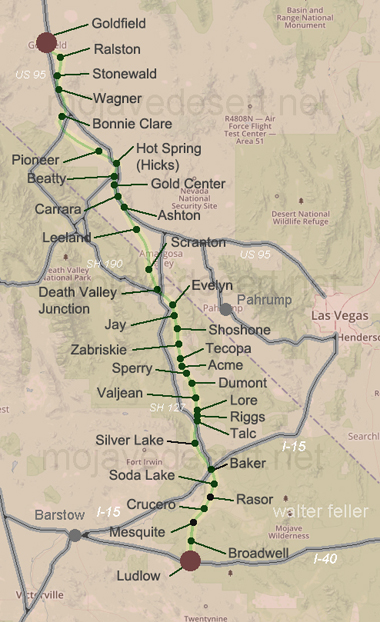
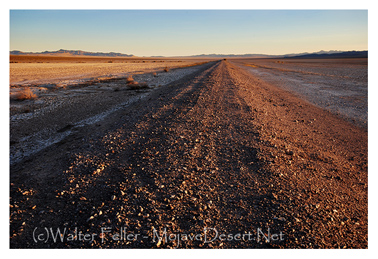
Tonopah and Tidewater railroad bed at Broadwell dry lake, near Ludlow, California
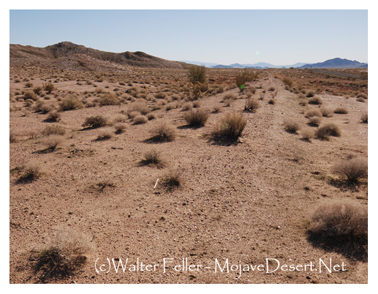
Tonopah and Tidewater railroad bed at Silver Lake north of Baker, California
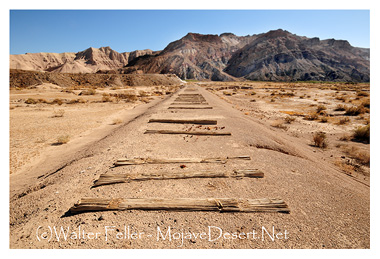
Tonopah and Tidewater railroad bed near Amargosa River Gorge
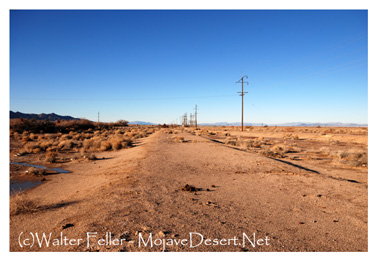
Tonopah and Tidewater railroad bed at Death Valley Junction, California